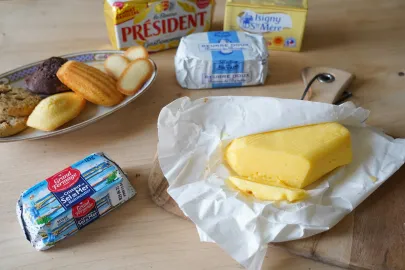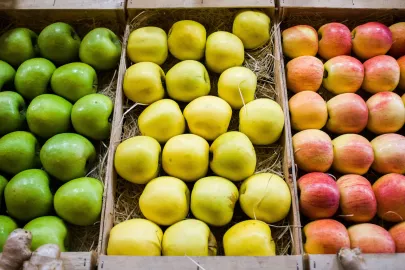Dijon Mustard is a simple condiment that can transform any dish. But what makes this mustard so special?
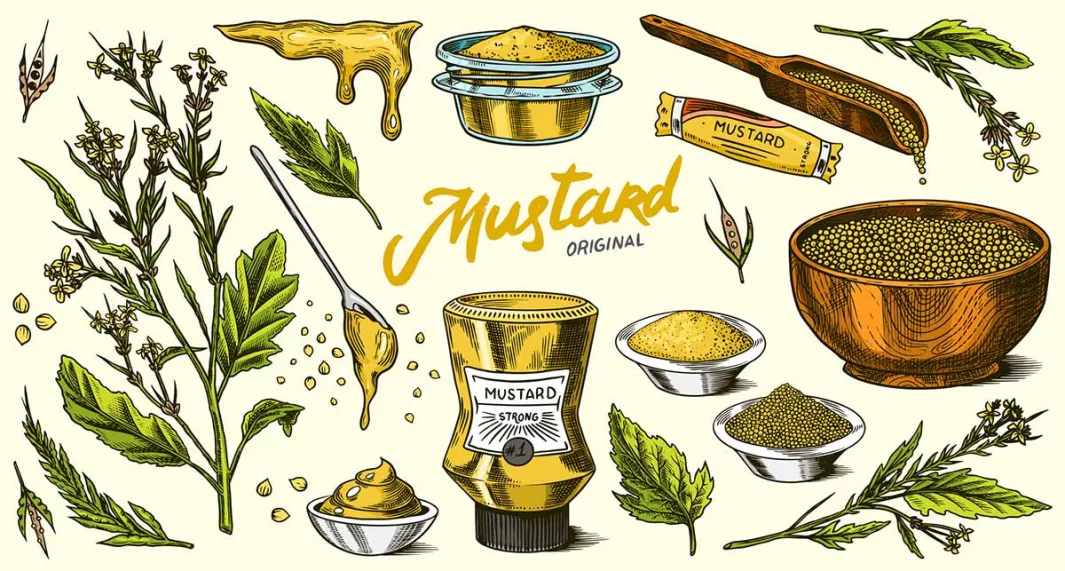
What are the best Mustard Brands?
When it comes to mustard the options are endless and the flavours are too. From classic French companies like Edmond Fallot who make gourmet Dijon mustard to Grey Poupon mustard, a brand of mustard that has become a global symbol of sophistication, French mustard brands have made their mark in kitchens around the world. These recognizable signature products not only add a kick to your dishes but also come in a wide range of styles making them an essential for any foodie.
For those looking for imported French specialties, the French food company Edmond Fallot's prepared mustards from Beaune, France stand out for their artisanal quality and delicate flavours.
Whether you're looking for a store brand, a specialty product or a classic French style mustard, the market has got you covered. Blind taste tests feature brands like Grey Poupon and Edmond Fallot which continue to top the food company rankings for their recognisable quality and winning flavour profiles. Whatever your taste these delicious and versatile condiments will elevate every meal.
Here are our selection of French mustards for sandwiches, dressings or just spreading on a fresh baguette. Whether you want a vegan, honeyed, brown seed or something else, we have the perfect bite for you.
A Deep Dive into French Mustard: Flavours, Brands, and Pairings
The Facts: Why We Love Mustard
The tanginess of mustard comes from its natural acidity which is balanced with spices, sweetness and a little heat. This bold flavour profile gets the palate going and that’s why we love it. Whether it’s the smooth creaminess of Dijon or the sharp kick of horseradish mustard, there’s no question mustard is an important ingredient in every cuisine.
Mustard Flavour : Mild to Bold
French mustard comes in many forms, from the mild creamy texture of Dijon stone ground mustard to the coarse sharpness of Meaux whole grain. For those who like a little heat, mustards with horseradish or chili will give you a kick. Mustards with dill or spiced with paprika and turmeric are just a few examples of the many flavours that make these condiments a staple in every kitchen.
Mustard for Every Plate
Mustard is so versatile that it’s a true condiment for every plate. Spread on sandwiches or pretzels for a tangy hit, mix it into dressings and sauces for a creamy base or add a spoonful to grilled bratwurst, roast beef or ham. Mustard based sauces add amazing depth to chicken or fish based meals. For a twist try a mustard vinaigrette or use it as a glaze for barbecue meats.
Gourmet Mustards for the Modern Taste Bud
Gourmet brands like Pommery and Edmond Fallot have put mustard in the spotlight for foodies. If you're feeling fancy, these companies offer unique blends like sweet honey mustard or mustard infused with truffle oil or white wine for a complex and tangy flavour. Flavoured mustards with ingredients like nuts, dill, black pepper or cider vinegar are as unique as they are delicious, and can bring a real pop to a gourmet dish.
How to Buy the Good Stuff
When buying mustard consider what you’re using it for. For sandwiches and hot dogs, smooth and tangy mustards are the way to go, for sauces and dressings coarse mustard is a better choice. Budget shoppers can find great options at Walmart or Wegmans, foodies can find specialty brands through niche markets. While more adventurous eaters can try assorted packs with classic, smoky or zesty varieties to taste test.
Mustard Beyond the Plate: Creative Uses
Mustard isn’t just for eating on its own or for making a salad dressing, it’s also a secret ingredient in the kitchen that brings balance to many dishes. Use it as a base for marinades, mix with honey, cider vinegar and a little oil for a sweet and tangy glaze. Add a teaspoon of mustard to deviled eggs or mix into mashed potatoes for a flavourful twist. Mustard powder can even be used to make dry rubs for meats, and add a subtle but sharp kick to barbecue.
Famous French Mustard Brands
France has some of the most famous mustard brands in the world, Maison Pebeyre and Bornier being two of them. They have perfected their products over centuries and offer gourmet mustards with big flavours and high quality. If you're looking for classic yellow mustard, Amora and Maille are the big names you see on the shelves worldwide. Smaller artisanal producers add to the mix with unique blends for every taste bud.
Pommery
Sold in its iconic stoneware jar, Pommery’s Moutarde de Meaux has been produced in the city of Meaux since the 1700s. This original mustard is a grainy, stone-ground variety with a richer and deeper flavour than Dijon. Besides their traditional recipe, Pommery also offers variations with ingredients like honey, cognac, fig, truffle, or green peppercorn. They even have a finely ground version, called “fine,” that resembles traditional Dijon.
Where to find it: While you might occasionally find Pommery at grocery stores in the UK, you can order it from speciality stores or directly from the Pommery website.
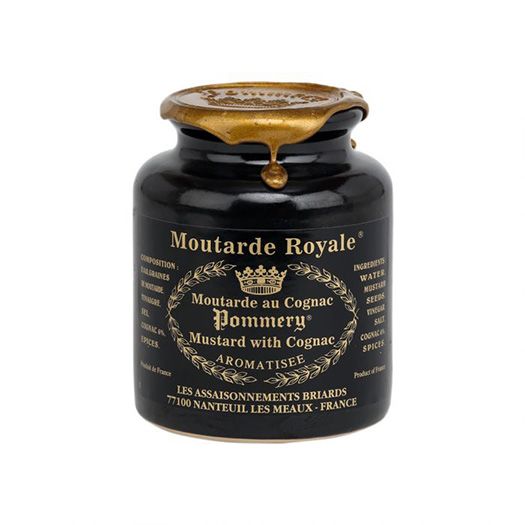
© Pommery mustard
Bornier
Spicy and tangy, Bornier is a traditional Dijon mustard that has been made in France for over 200 years. There are three varieties: original, a smooth, creamy Dijon; whole grain, packed with crunchy mustard seeds; and honey mustard, made with 10% honey. The Dijon and whole grain varieties are also available in organic versions.
Where to find it: All Bornier varieties can be found on Amazon, and you can find the organic versions at shops like Whole Foods.
Maille
Arguably the most famous French mustard brand, Maille has been around for centuries, selling vinegar and mustard in Paris and Dijon. Common versions include Dijon and Whole Grain. In France, you’ll find varieties with truffles, grilled onions, walnuts, pesto, black currants, and more.
Where to find it: Visit your local grocery store, order online from Amazon, or stop by a Maille boutique in Bordeaux, Paris, Dijon, Melbourne, or London.
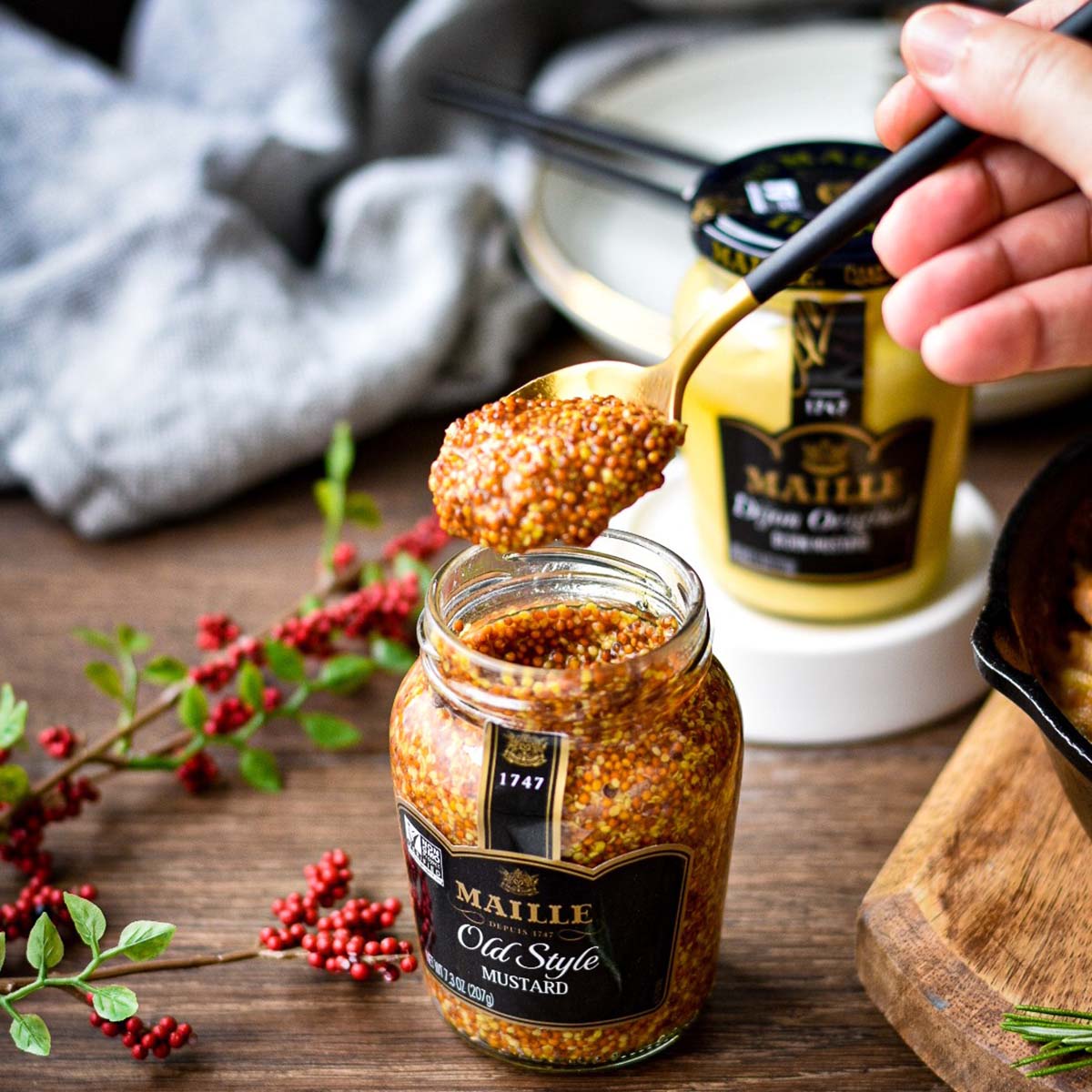
© Maille
Amora
An offshoot of the Maille brand, Amora mustard is a popular choice in France. With the tagline “fine et forte,” it’s spicier than regular Dijon, and you can find an “extra forte” version. Amora is more affordable and found in nearly every French kitchen.
Where to find it: Amora is easy to find in any French supermarket, and you can find them in some supermarkets in England too.
Edmond Fallot
Edmond Fallot has been crafting world-class French mustard in their family-run mustard mill in Burgundy since 1840. Nowadays, the business also sells vinegar, relish, and mustard in plenty of varieties and flavours. Their traditional mustards include a creamy Dijon-style and a whole grain variety. They also produce speciality flavours like walnut, basil, honey, fig, and more.
Where to find it: You can find the original Dijon and whole grain styles at gourmet shops around the country, or order one of the speciality flavours from Amazon. You can also visit the Edmond Fallot boutiques in Beaune and Dijon.
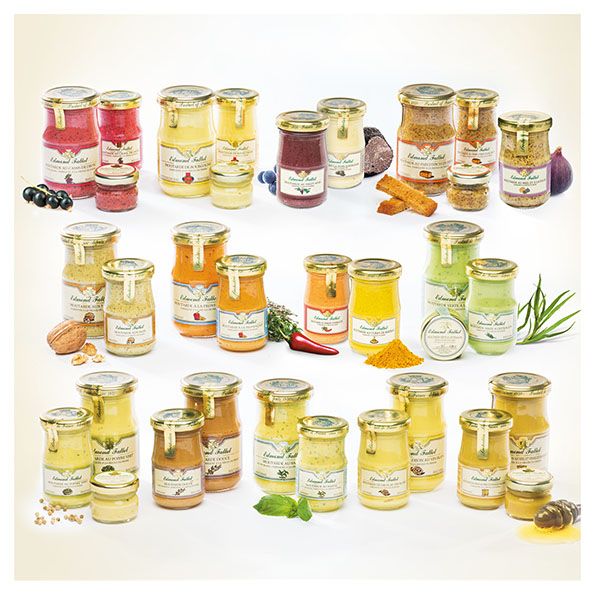
© Edmond Fallot
Maison Pebeyre
Maison Pebeyre is one of France’s oldest family-run truffle houses. They produce a rare and luxurious mustard that’s quite hard to find.
Since 1897, Maison Pebeyre has been renowned for its high-quality truffles, shipping these exquisite products around the world. With their world-class truffles, Maison Pebeyre offers a range of gourmet items, including white truffle oil, truffle mayonnaise, truffle salt, truffle honey, and their famous truffle mustard.
Where to find it: Your best bet for finding a jar of Maison Pebeyre’s truffle Dijon is to visit a local gourmet shop that specialises in French products.
The History of Mustard
Mustard, a condiment as tangy as its history, has been around for millennia. Mustard seeds were first cultivated in the Indus Valley and China around 4000 BC and made their way to Ancient Rome where they were mixed with vinegar to create a pungent condiment. The first recorded recipe is in the Roman cookbook De Re Coquinaria where mustard seeds, honey, vinegar and spices were combined – a precursor to the sophisticated mustard flavours we enjoy today.
Fast forward to the 10th century when mustard seeds arrived in Paris thanks to the monks of Saint Germain des Prés. By the 13th century Dijon and Meaux were the global mustard capitals and both regions perfected the recipes that would define French mustard. By the 14th century France was regulating mustard production and it was officially a staple ingredient.
Today French mustard is all about quality and you can find everything from classic Dijon to whole grain, honey mustard, beer infused and more. Grey Poupon and the boutique producers deliver products to suit every taste – from the subtle sweetness of honey mustard to the bold spice of coarse ground. French mustards have inspired international imitations like American deli mustard and hot horseradish blends but the originals are still unmatched in their tang, spice and complexity.
Contributor

Editor




